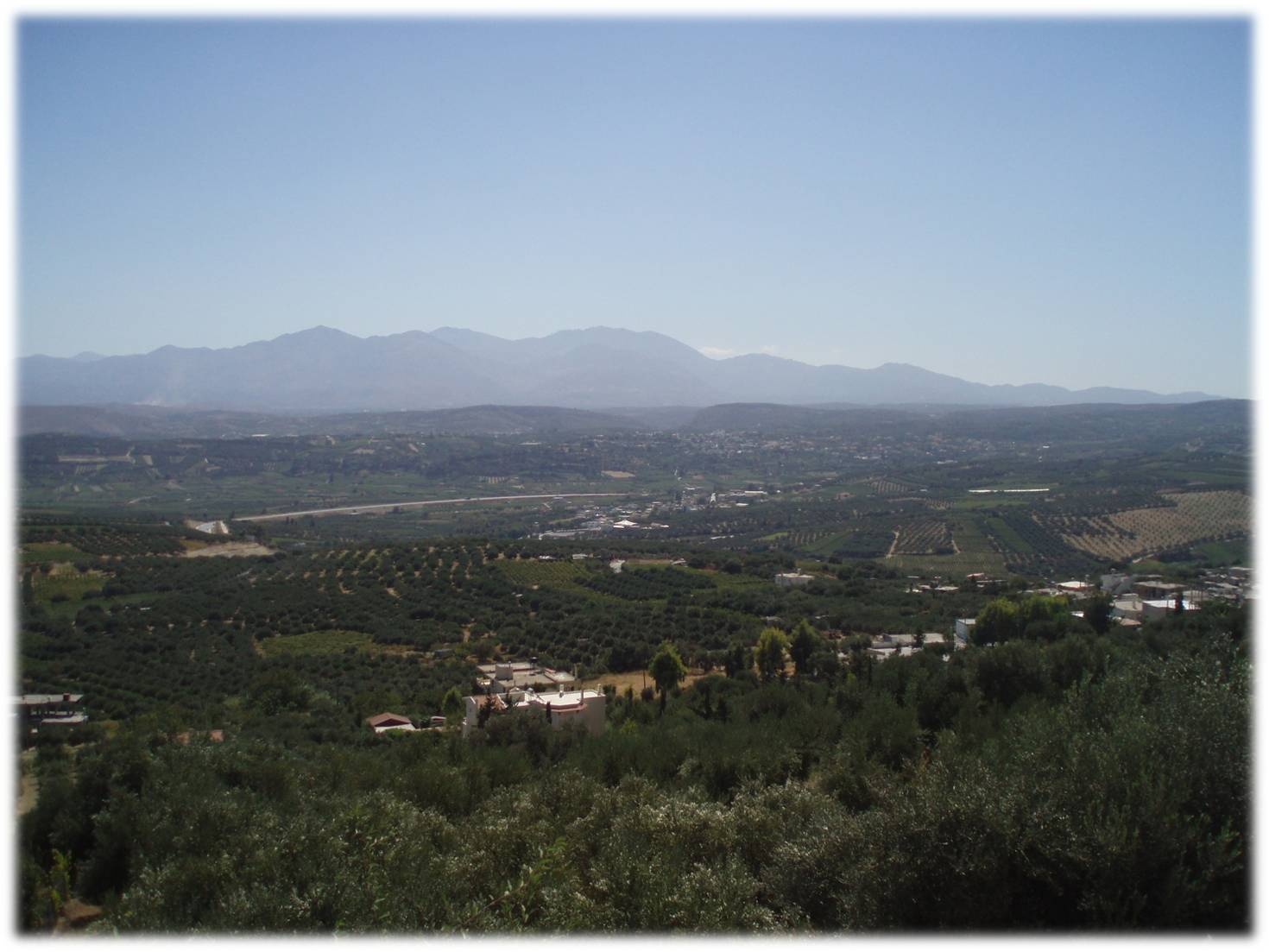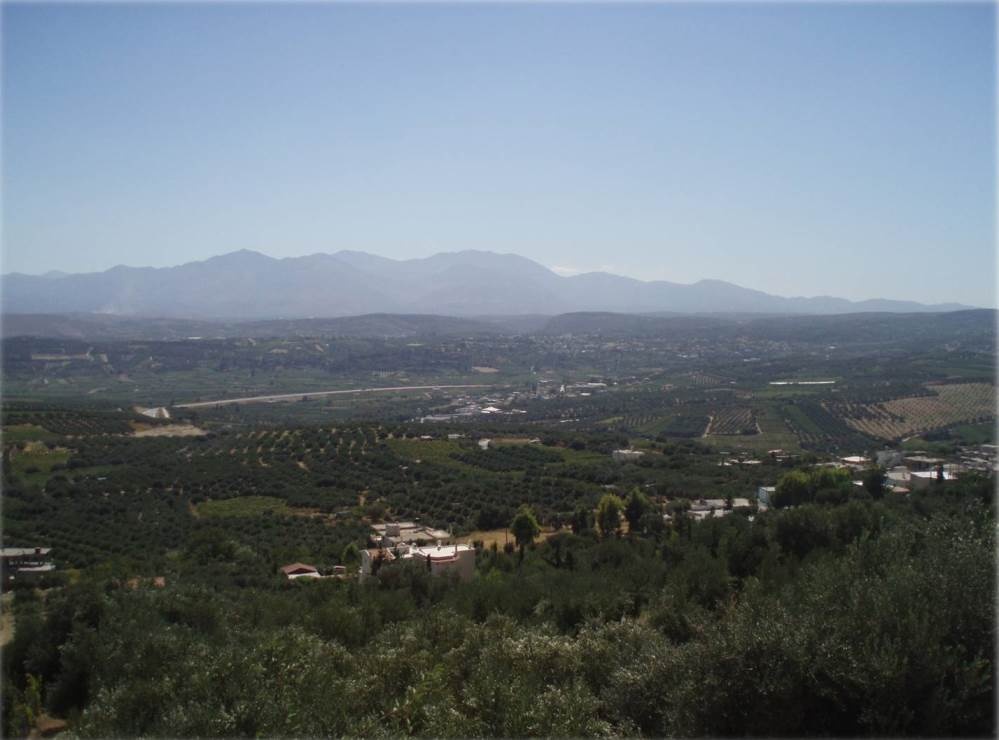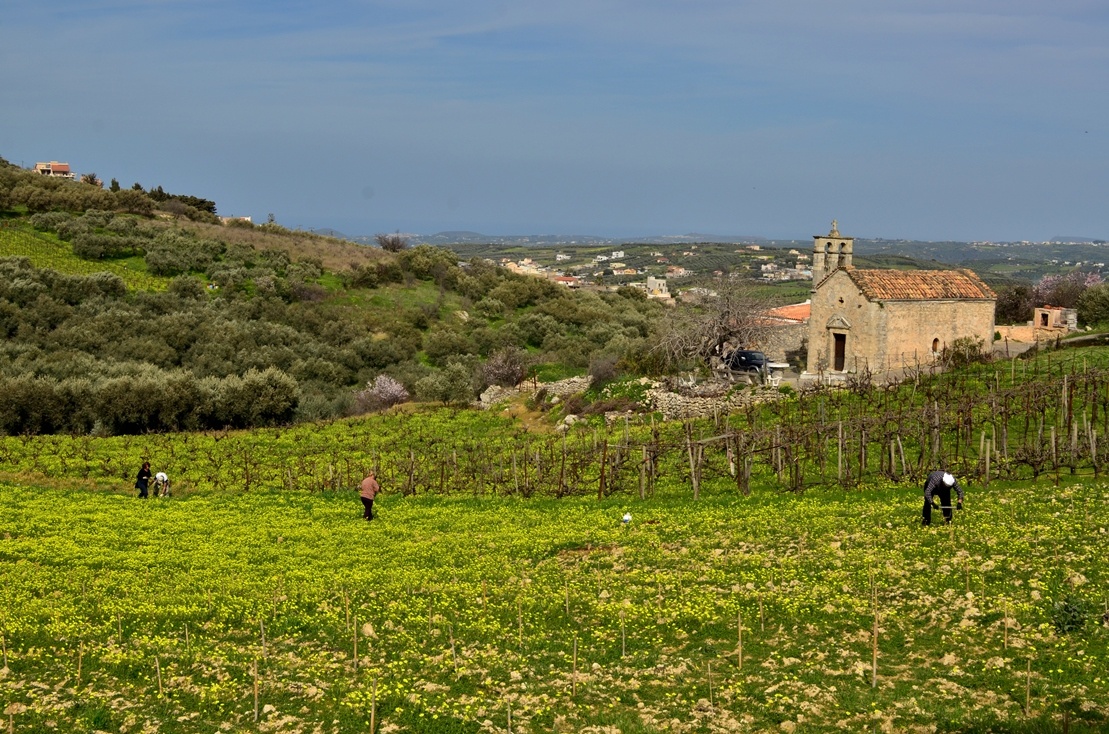
Distance: 12.8 km
Entrance / exit coordinates: 35° 12.932'N / 25° 11.743'E (Peza)
Difficulty: Moderate
Amenities: In Epano Archanes, where the Town Hall is also located
The route starts in the village of Peza. It is uphill for 1.6 km with an average incline of 3.5%, quick clean dirt and an asphalt stretch.
After a slightly downhill kilometre there is a short uphill stretch, with an average incline of 4.2%, which, however, includes a difficult 25m section with loose dirt and a 20% incline.
Then there is a quick, slightly downhill kilometre, that leads to the last, and demanding, uphill stretch of an average incline between 5.5% and 8%, at the end of which the route comes to a narrower, technically challenging, straight path with large rocks and eroded tracks.
Then, a short asphalt stretch leads to the beginning of the descent, initially with powdery soil and “S” turns and then a fast, well-trodden track that once again takes you to the entrance of Peza, through the alleys of Katalagari village.
During your tour the terrain often changes from loose and well-trodden with gravel, to clearer patches with grooves and sharp edges, as well as eroded patches with rocks and low olive tree branches.
Download the kml file of the route in your device: (kml) Peza circular tour
Peza

Distance from Heraklion: 17.7km
Amenities: Town Hall, Citizens’ Service Centre (KEP), small taverns and retail shops, groceries, pharmacy, banks and regional medicinal centre.
Peza is the seat of the Municipality of Archanes-Asterousia and it is located in the most important wine producing area in the Prefecture of Heraklion. The locals traditionally work in viticulture and olive tree cultivation, producing top quality olive oil with a designation of origin, as well as branded superior quality wine with a designation of origin. One of the most interesting points in the village is the establishment of the ‘Peza Union’, which has standardised the olive oil and the wine produced by the region’s farmers since 1933. In the exhibition premises one can see the equipment of the old 19th century olive mill, grape presses, wine pumps, distillation equipment, etc.
WHAT TO SEE:
- At the Agios Konstantinos location stomping vats constructed in the Venetian period (15th-16th century) have been found. It is a complex of four wine-presses in a row.
- The village Cathedral [Metropolis] is dedicated to St. Nicholas and holds its feast on December 6.
- The Churches are dedicated St. Constantine (Byzantine church), St. Demetrius, St. George (of the cemetery), and the Saints Cosmas and Damian.
- A great festival is celebrated on 21 November in the old church of Panagia ton Eisodion [Madonna of the Presentation] (who is the village’s matron saint).
Katalagari

Amenities: Taverns, agro-tourism accommodation, groceries
Perched on the east foot of Kefala Hill, with a panoramic view over the vineyards and olive groves of the plain. Residents are mainly farmers who have preserved the secrets of making good wine and raki over the years. Excellent table grapes are produced here.
The name of the village comes from the word ‘logara’, which means ‘clear liquid that has settled’; ‘logara’ was also a term used for a slope affording a good, clear view. The name is a combination of the words ‘kato’ (lower) and ‘lagara’.
Although in Greek it is rare for an ‘o’ to be turned into an ‘a’, this happens in spoken language, and so Kato Logari turned into Katalagari. It might also be related to the word ‘logari’ meaning ‘treasure’. In the past it must have been named Kato Logari (although it was built higher than its present-day position) and later on, when these two words were combined the name Katalagari emerged. Another legend has it that the name of the village comes from the verb ‘katalagiazo’, which means to settle, to precipitate, because they carried the grape must from the stomping vats to Katalagari to let it settle and turn into wine.
During the Nazi occupation the place was a base for Nazi forces; despite this fact, a lively nucleus of National Resistance was organised here.
There is a pretty little theatre in the village that hosts several cultural events


